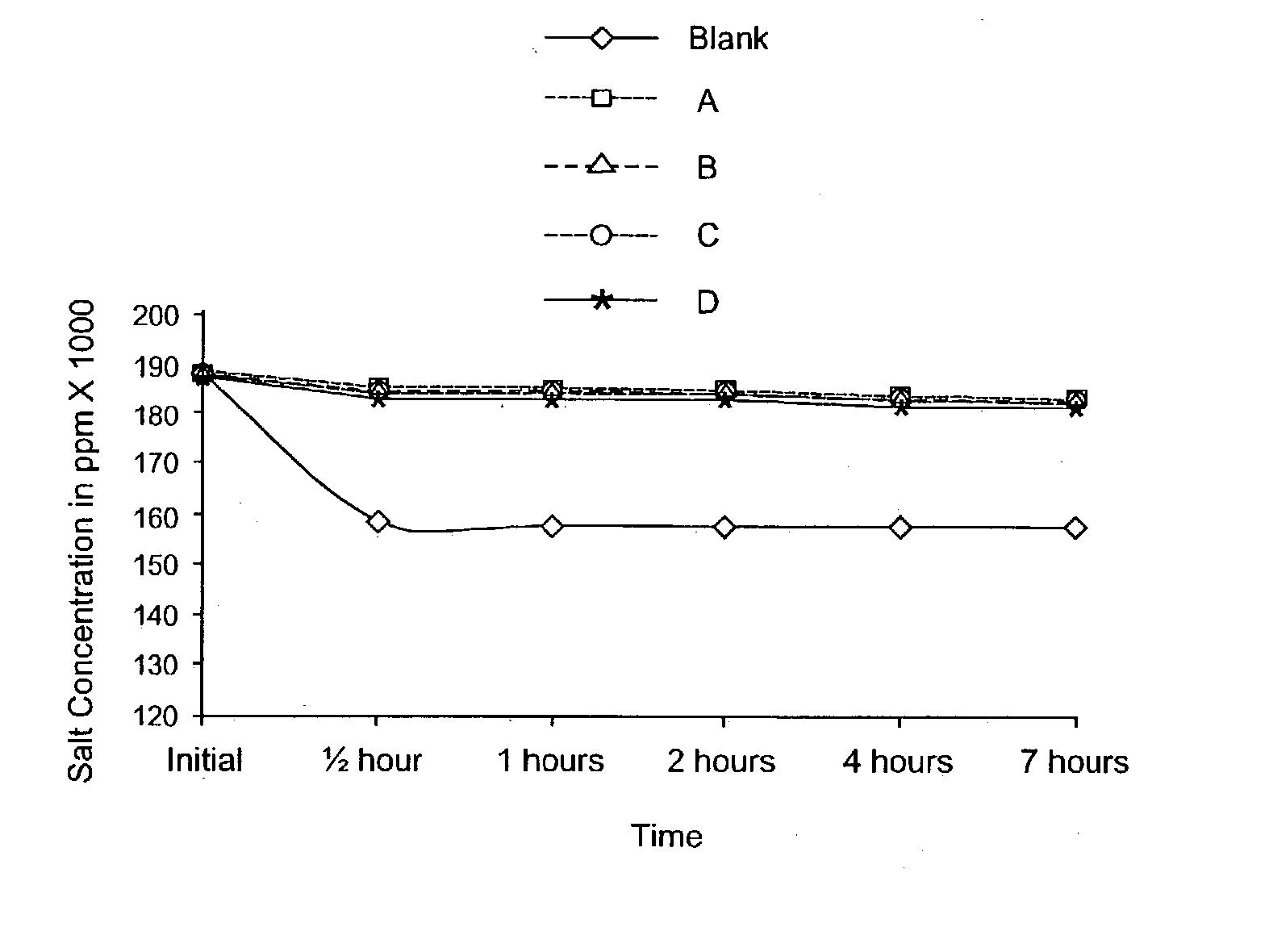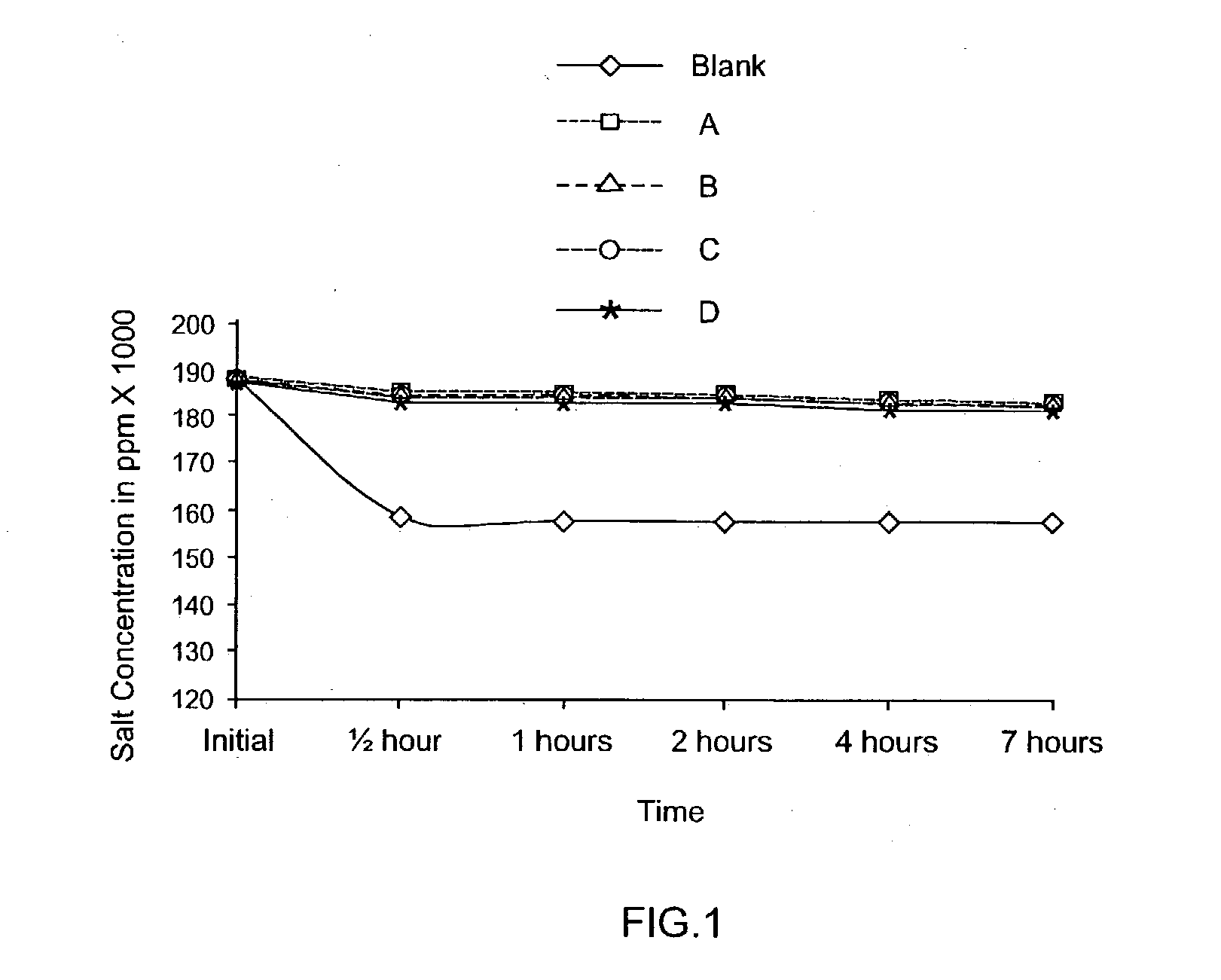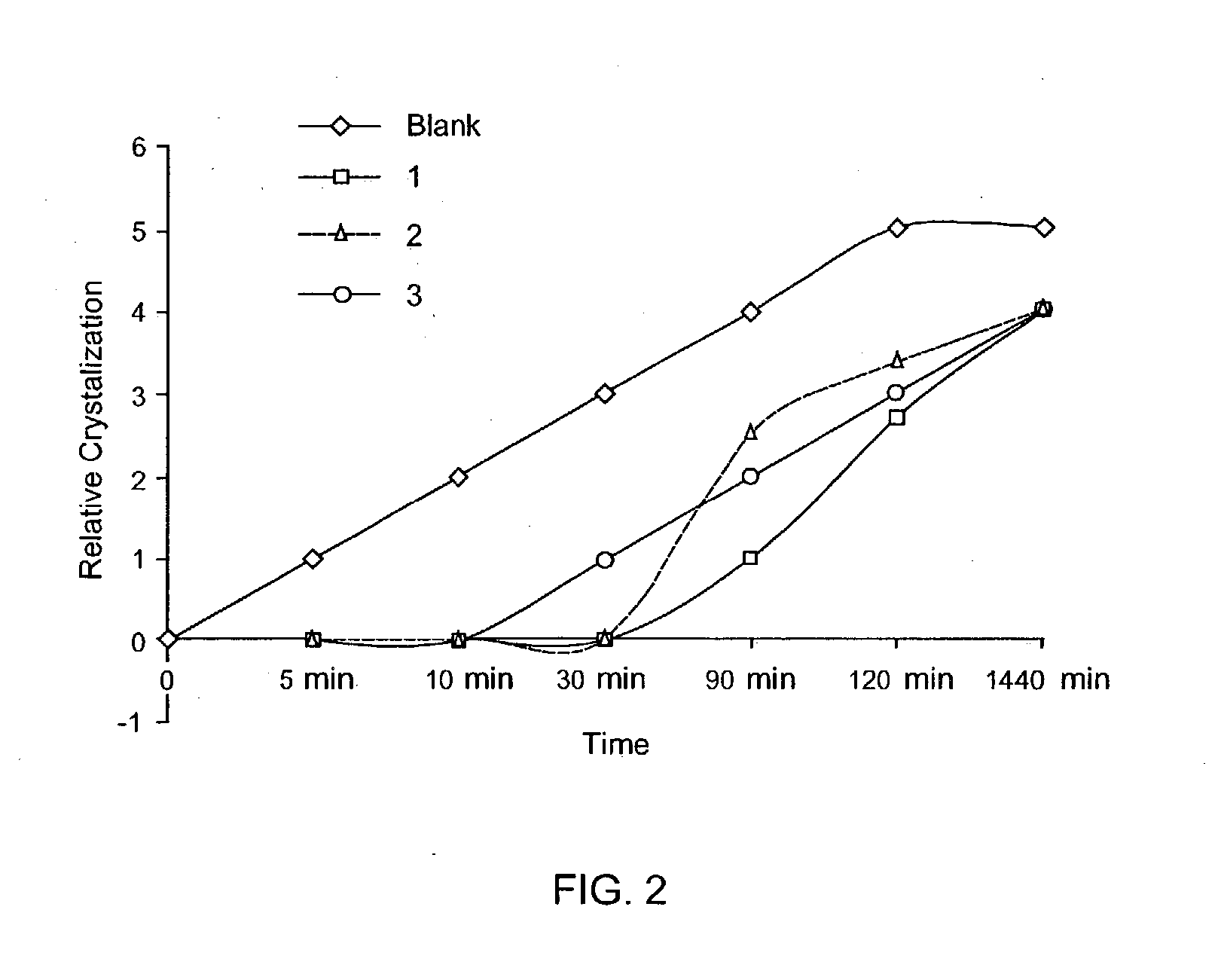Methods for the inhibition of salt blockages in oil and gas wells
- Summary
- Abstract
- Description
- Claims
- Application Information
AI Technical Summary
Benefits of technology
Problems solved by technology
Method used
Image
Examples
example 2
[0030] The solutions used in Example 1 were placed in a 200.degree. F. (93.degree. C.) constant temperature water bath and allowed to thermally equilibrate prior to mixing. After mixing, the solutions were kept in the water bath for an additional 30 minutes. The mixtures were removed, and placed at room temperature. The samples were observed at regular intervals for evidence of precipitation (FIG. 2). In the Figure, Inhibitor #1 is NA Minus 55 (Clearwater, Inc.; Houston, Tex.), Inhibitor #2 is an experimental salt inhibitor (Donlar Corporation; Bedford Park, Ill.), and Inhibitor #3 is NA Minus 55 (3801 experimental variation of NA Minus 55; Clearwater, Inc.; Houston, Tex.). The presence of inhibitors delayed the onset of crystal nucleation.
example 3
Tube Blocking Test
[0031] Solutions were prepared at varying inhibitor concentrations as described in Example 1, using NA Minus 55 as the salt inhibitor. The solutions were placed in a 190.degree. F. (88.degree. C.) constant temperature water bath and allowed to thermally equilibrate. The solutions were introduced into a mixing "tee" using peristaltic pumps. The mixed solution was then pumped into a five foot (1.5 meter) long 1 / 8 inch (0.3 cm) stainless steel tube which was also immersed in the water bath. The mixed solution next entered a test coil consisting of one meter of 0.02 inch (0.05 cm) PEEK tubing immersed in a 40.degree. F. (4.degree. C.) thermostatically controlled cooling bath. The outlet temperature of the test coil was measured to be 43-45.degree. F. (6-7.degree. C.) throughout the test. The threshold treatment level for inhibition of this brine was found to be about 50 ppm. A plot of the differential pressure against time is shown in FIG. 3. At 20 ppm, the onset of pr...
example 4
Reducing Wash Water Usage in a Well
[0032] A well was completed at a depth of about 9,000 feet (2743 meters). The formation water contained chloride ions in excess of 200,000 ppm (near saturation). Salt bridging of the tubing was problematic, and treatment with substantial volumes of water was required. Nitrilotriacetamide hydrochloride salt (trade name NA Minus 55; Clearwater, Inc., Houston, Tex.) was added to a reduced amount of injection water, resulting in control of salt bridging. Treatment levels were optimized for inhibition instead of dilution once the control was achieved.
PUM
| Property | Measurement | Unit |
|---|---|---|
| Fraction | aaaaa | aaaaa |
| Fraction | aaaaa | aaaaa |
| Pressure | aaaaa | aaaaa |
Abstract
Description
Claims
Application Information
 Login to View More
Login to View More - Generate Ideas
- Intellectual Property
- Life Sciences
- Materials
- Tech Scout
- Unparalleled Data Quality
- Higher Quality Content
- 60% Fewer Hallucinations
Browse by: Latest US Patents, China's latest patents, Technical Efficacy Thesaurus, Application Domain, Technology Topic, Popular Technical Reports.
© 2025 PatSnap. All rights reserved.Legal|Privacy policy|Modern Slavery Act Transparency Statement|Sitemap|About US| Contact US: help@patsnap.com



